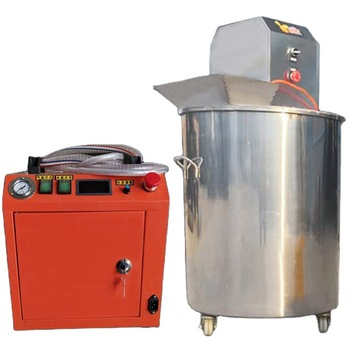Professional solutions on concrete addtives, Concrete Foaming Agent, Superplasticizer, CLC Blocks Additives, and foaming machine
(What is Superplasticizer in Concrete)
What is Superplasticizer?
Superplasticizer is a chemical additive used in concrete, to increase its strength and workability. Its composition changes as it is absorbed into the underlying particle. These changes can affect the slump and surface composition of cement.
Workability
Superplasticizers are chemical substances that are used to improve the workability of concrete. They can reduce water content by up to 30 percent. This helps concrete stay strong and compact while retaining its initial strength.
Superplasticizers are added to the mix after it is mixed. The dosage is usually based on the need for the application. It is typically between one and three liters per cubic meter of concrete. Most commercial superplasticizers are formulated products tailored to meet specific market needs.
Some of the advantages of using superplasticizers in concrete include enhanced early strength, greater resistance to freeze-thaw cycles, and self-levelling properties. It is also possible to produce concrete with a lower water to cement ratio.
Increase slump
Superplasticizers are a class of polycarboxylates that act as water reducers. They are able to reduce water content by 12-30%. Although the amount of water reduction varies from one superplasticizer to another, they generally have the ability to enhance the early strength of concrete by 50-75%.
During production, the use of superplasticizers can result in a high rate of slump loss. This is due to the presence of the material in the concrete and the relative effects of the production methods. The rate of slump loss can be decreased by incorporating a retarder or by adding the material at a different interval.
Concrete with a high slump value can lose its durability. A number of factors influence slump loss, including the type of cement, the type of water used, the temperature, the relative effects of external conditions, and the batching tolerances.
Strength
Superplasticizers are used in concrete for increasing the workability, rheology and durability of the concrete. This admixture has many applications, including lightweight concrete, pumping concrete, blast furnace slag cement concrete and fly ash concrete.
Several studies have investigated the effects of superplasticizers on concrete. The strength development of the concretes showed a general increase in the compressive strength of the concretes. However, the freeze-thaw resistance did not show any harmful effect.
Superplasticizers have the ability to lower the water:cement ratio of the concrete. This permits the production of concrete that meets the performance requirements of the users. But, the water reduction depends on the superplasticizer dosage. If the amount of superplasticizer is excessive, the concretes may exhibit undesirable side effects.
Adsorption onto OPC particles
A superplasticizer is an admixture that increases the flowability and placing characteristics of concrete by adsorbing on cement particles. It is a very important admixture for modern concrete since it improves its dynamic yield stress, thixotropic index, and water-cement ratio.
There are different kinds of superplasticizers. The most common one is the polycarboxylate-based type. These types of admixtures adsorb on cement particles through electrostatic repulsion. In addition, polycarboxylate-based admixtures can help to improve the workability of concrete.
Anionic PCEs have a higher dispersing capability. They are able to adsorb on cement particles and have high affinity for the particles. This is because the PCEs consume positive charges on the surface of the particles.
Impact of changes in surface composition of cement on superplasticizer
Superplasticizers are additives used to enhance early strength of concrete. They allow reduction in water content by about 30%, thus reducing shrinkage cracking and increasing workability. However, the effect of superplasticizers on the concrete rheology is not well understood. Therefore, a study comparing the effects of two popular superplasticizers on the rheological properties of cementitious pastes was carried out.
Several rheological parameters were measured on a number of pastes prepared at 0.6 with SP and without SP. The rheology of all the pastes displayed significant shear thinning. At low shear rates, the apparent viscosity was decreased, while at high shear rates, the viscosity of all pastes increased.
Problems with superplasticizer mixes
A superplasticizer is a type of chemical additive for concrete. It is a water reducer which improves the workability of the concrete and increases the strength. However, the usage of this admixture can present problems.
Superplasticizers are added to concrete after mixing. They provide the material with high strength, durability, and resistance to freeze-thaw cycles. But they can lead to bleeding and surface tears. The concrete with superplasticizers is more cohesive than control concrete and has higher air-void spacing factor.
Some of the factors that influence slump loss are the amount of superplasticizer, the initial slump value, the type of cement, and the amount of fine aggregate. The presence of other admixtures, temperature, and humidity also affect slump loss.
Concrete additives Supplier
TRUNNANO is a reliable concrete additives supplier with over 12-year experience in nano-building energy conservation and nanotechnology development.
If you are looking for high-quality concrete additives, please feel free to contact us and send an inquiry. (sales@cabr-concrete.com)
We accept payment via Credit Card, T/T, West Union, and Paypal. TRUNNANO will ship the goods to customers overseas through FedEx, DHL, by air, or by sea.
(What is Superplasticizer in Concrete)








